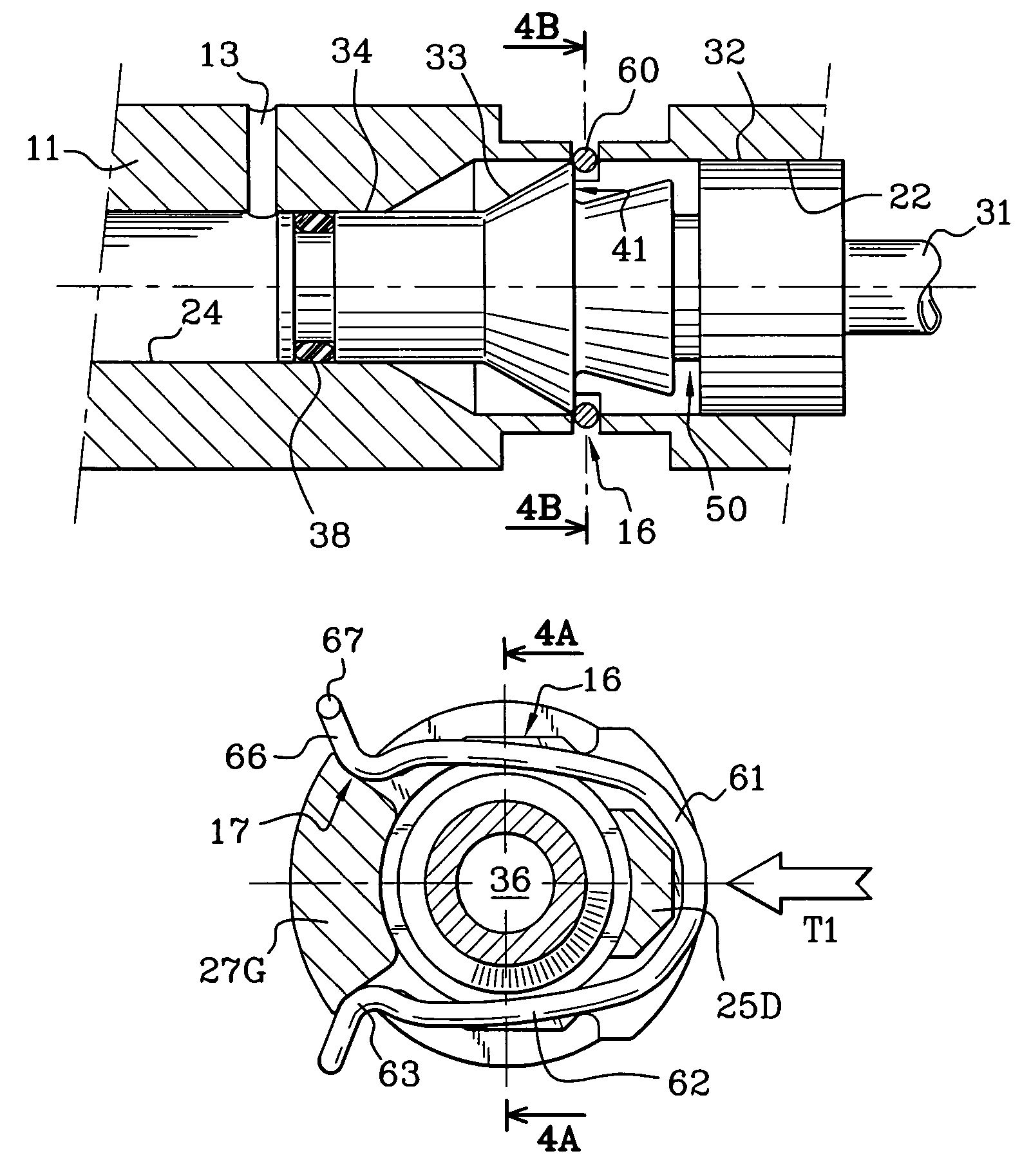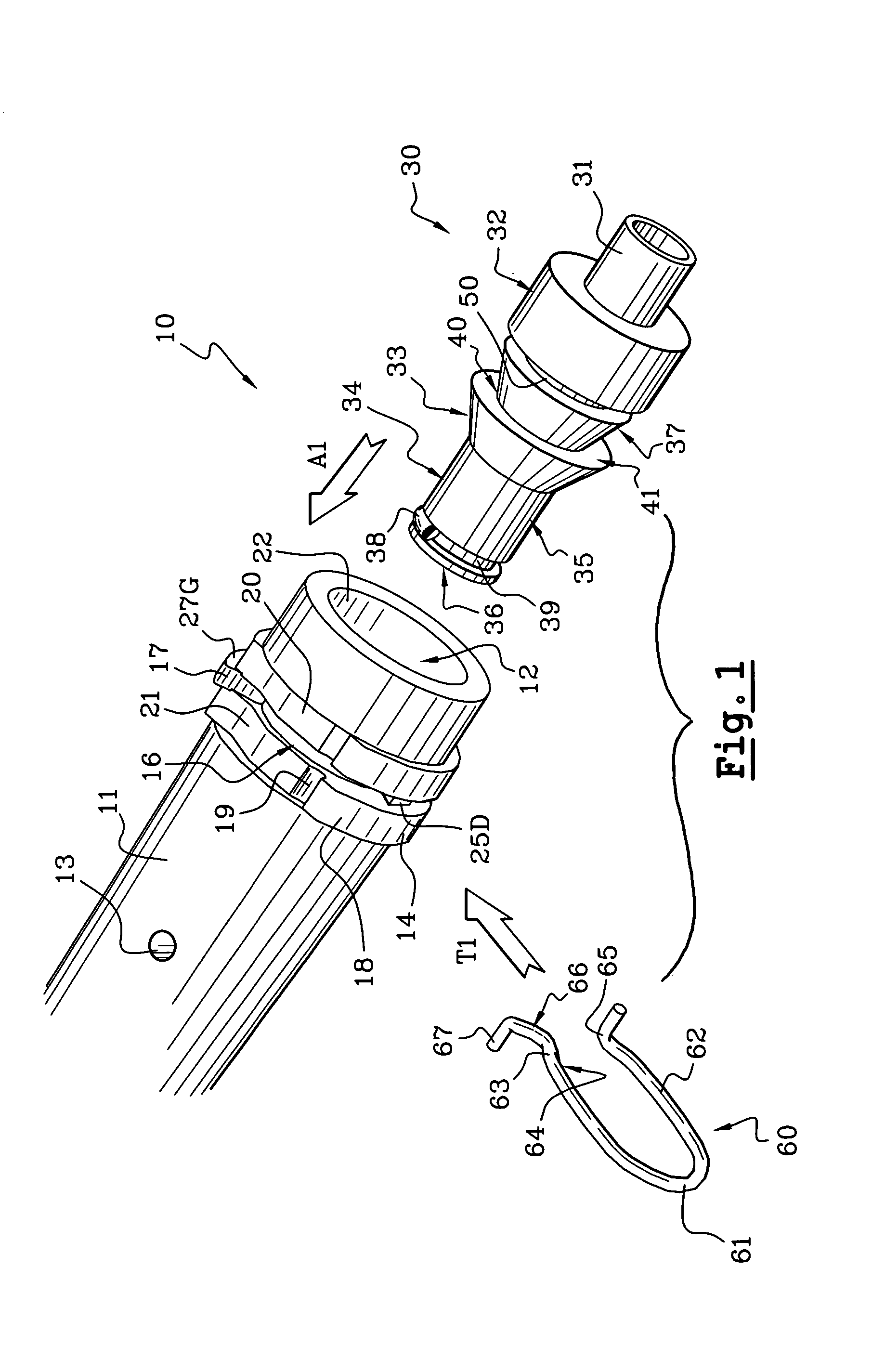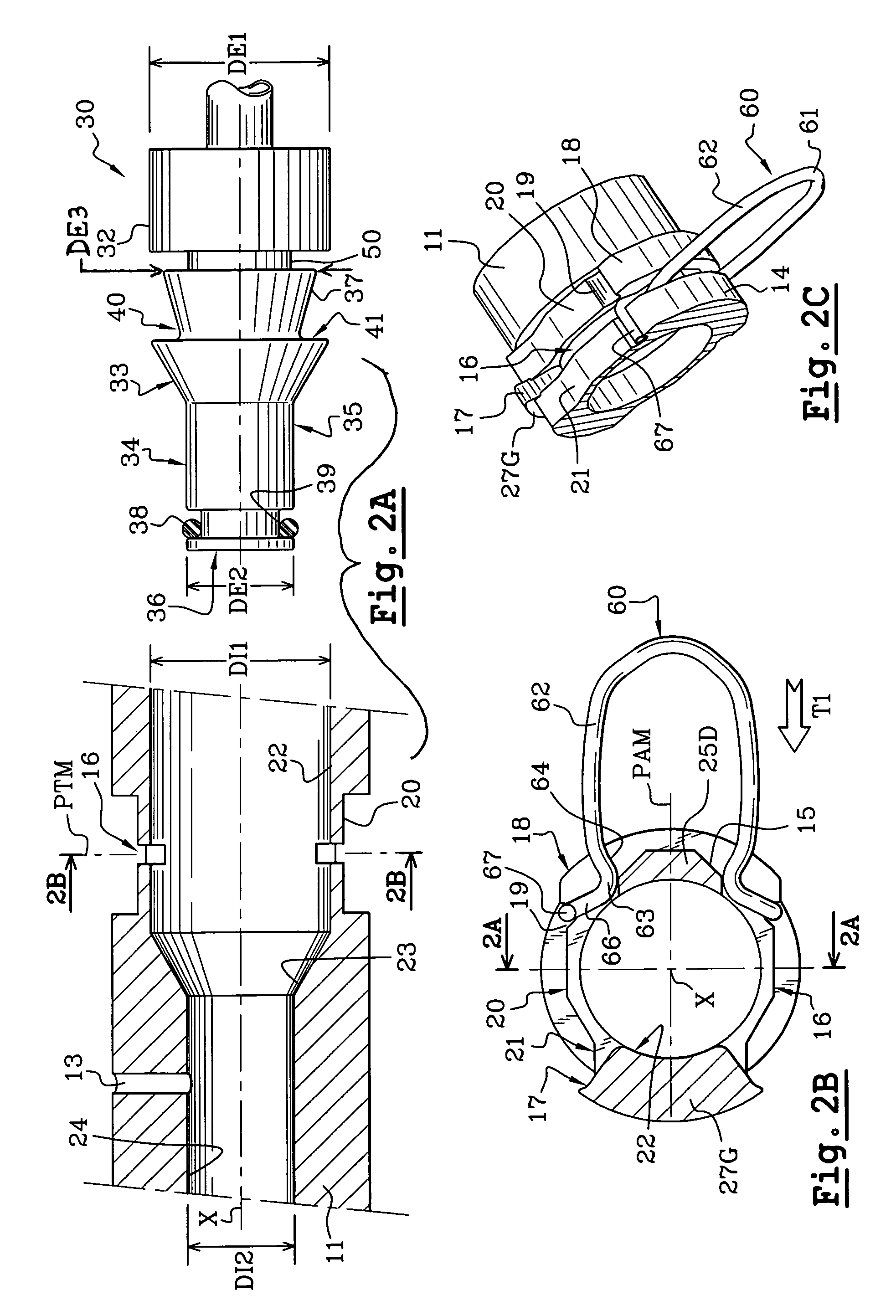Supply connection device for a fluid pressure system
a fluid pressure system and connection device technology, applied in the direction of mechanical equipment, pipe elements, couplings, etc., can solve the problems of inability to meet production requirements, inconvenient operation, and difficulty for operators to connect the device in its locking position, so as to avoid accidental disconnection, avoid damage to the working surface of the body, and avoid the effect of accidental disconnection
- Summary
- Abstract
- Description
- Claims
- Application Information
AI Technical Summary
Benefits of technology
Problems solved by technology
Method used
Image
Examples
Embodiment Construction
[0049]In the following description, in order to assist understanding, we will use, without limitation, the expressions vertical, horizontal, front, rear, left, right etc. with reference to the drawings and in accordance with the definitions given in the description.
[0050]In the description, those elements which are identical, similar or analogous to each other will be designated by the same reference signs.
[0051]The device 10, for connecting a feed line for a pressure fluid system, which is shown in FIGS. 1 to 5, consists essentially of a front body 11 of a feed inlet 12, which in this example is substantially tubular with an axis X, and which is able to be fixed with respect to a hydraulic member such as a receiver (not shown), together with a rear connector 30 which is arranged to be fixed to the end of a feed pipe (not shown).
[0052]We choose to describe here the device 10 in the case where the connector 30 is considered to be movable with respect to the feed inlet 12, but, withou...
PUM
 Login to View More
Login to View More Abstract
Description
Claims
Application Information
 Login to View More
Login to View More - R&D
- Intellectual Property
- Life Sciences
- Materials
- Tech Scout
- Unparalleled Data Quality
- Higher Quality Content
- 60% Fewer Hallucinations
Browse by: Latest US Patents, China's latest patents, Technical Efficacy Thesaurus, Application Domain, Technology Topic, Popular Technical Reports.
© 2025 PatSnap. All rights reserved.Legal|Privacy policy|Modern Slavery Act Transparency Statement|Sitemap|About US| Contact US: help@patsnap.com



